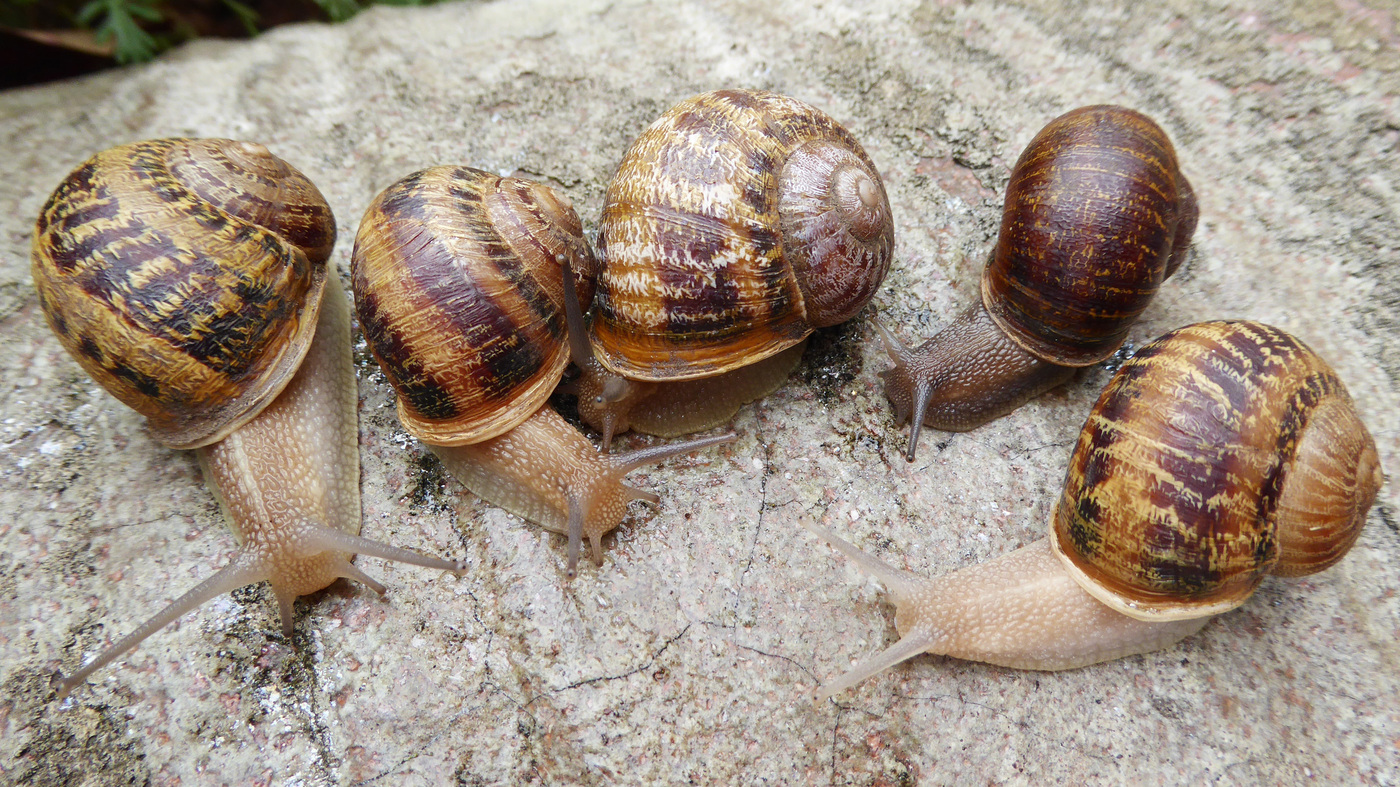Fast-forward two years, and researchers have finally identified the gene responsible for shell direction in snails. Snails who have both working copies of Lsdia1 will be traditional right-coilers. On the other hand, snails with only have Lsdia2 will be left-coilers like Jeremy. To confirm their findings, they were able to use Crispr to edit out Lsdia1 while leaving behind Lsdia2. Just as expected, the snails were born lefties and so were their babies.

Jeremy (second to last) with his friends Senda, Jara, Tomeau, and Indi.
The research presented by the researchers, Reiko Kuroda and Masanori Abe, is really telling of the future to come concerning left and right symmetry in organisms. Chirality is something that is almost universal among species. Exploring the body plans of animals is hidden in their genetic codes, and it is remarkable of how little is known on the subject of leftiness and why it is a rarity in nature. For instance, situs inversus, a condition where human internal organs are flipped affects only about 1 in 10,000 people. People with this condition are as healthy as people with traditionally-flipped organs, so why is it such a rarity? The researchers believe the answer may lie in snails, since situs inversus is similar to left-coiling in snails. Snail research turns out to have some exciting news, but I imagine the work is rather slow.
Links to Sources:
https://www.nytimes.com/2019/05/24/science/snails-lefties-crispr.html?rref=collection%2Ftimestopic%2FGenetic%20Engineering
https://www.npr.org/sections/thetwo-way/2017/10/13/557652159/jeremy-the-lonely-left-twisting-snail-dies-but-knows-love-before-the-end
Jeremy's story is truly an inspiration. It makes me think that anyone will find a mate if they look hard enough, even half way around the world. Although his children were all right-coiled, I am sure he is looking down with them and smiling. His DNA and his children's lead to great insight into animal genetics, and in a sense, human genetics. If they know all of this about snails, imagine what they will be able to do with humans in the future!
ReplyDeleteGo Jeremy! Im curious as to why Jeremy's offspring were righty even after he mated with another lefty. Nevertheless this is an interesting find. I had no idea that situs inversus, where humans have inverted organs even existed and its also interesting that people with this condition can live perfectly normal and healthy lives.
ReplyDelete